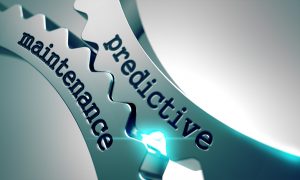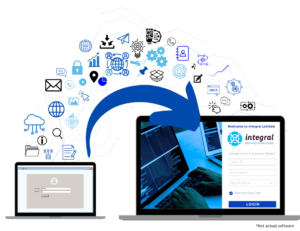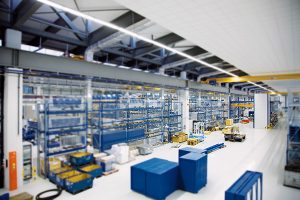5 Ways AI Can Boost Productivity

Thanks to recent studies, the AI market is expected to grow at a compound annual growth rate (cagr) of 50% from 2017 to 2025
Thanks to recent innovation in cloud computing and big data storage and analysis, artificial intelligence is making great strides in improving efficiency in manufacturing environments, leading to better performance. AI also provides critical information to help managers make more informed business decisions.
The AI market is expected to grow at a compound annual growth rate (CAGR) of 52% from 2017 to 2025, according to a recent report from Research and Markets.
Machine automation produces quality products faster and more efficiently, while providing critical information to help managers make more informed business decisions. There are still some hurdles, however: Many companies are reluctant to share sensitive production and process data. There is also the challenge of integrating vast amounts of data, from both the shop floor and the back office, to create real time insights. To make a smart factory work as a unified system, some companies use a middleware platform—”a layer of software that connects client and back-end systems and ‘glues’ programs together.”
Here are 5 ways that manufacturers can raise their level of productivity by using AI.
1. More accurate demand forecasting
Using AI and machine learning, systems can test hundreds of mathematical models of production and outcome possibilities, and be more precise in their analysis while adapting to new information such as new product introductions, supply chain disruptions or sudden changes in demand. According to consulting firm McKinsey, due to machine learning, overall inventory reductions of 20% to 50% are possible. AI can also introduce efficiencies with something as simple as taking physical inventory. A task that takes employees one month to complete at Wal-Mart can be completed in 24 hours using sophisticated drones that fly through the warehouse, scan items, and check for misplaced items.
3. Hyper-Personalized Manufacturing
Advances in AI and software intelligence are enabling companies to take personalization to the next level by making products and services that are highly relevant to individual consumers. This is important because personalization sells. In a recent survey, 20% of consumers said that they would be willing to pay a 20% premium for personalized products or services. And brands who are willing to personalize products are also able to build greater trust with their customers. According to Accenture, 83% of consumers in both the U.S. and U.K. are willing to have trusted retailers use their personal data in order to receive tailored and targeted products, recommendations, and offers.
5. Automated Material Procurement
Analytics combined with machine learning will record and critique everything, including the beginning stages of quoting and establishing the supply chain. McKinsey predicts machine learning will reduce supply chain forecasting errors by 50% and reduce costs related to transport and warehousing and supply chain administration by 5% to 10% and 25% to 40%, respectively. Honeywell is already integrating AI and machine-learning algorithms into procurement, strategic sourcing and cost management.
2. Predictive Maintenance
Organizations are starting to realize that it’s worth investing in predictive maintenance solutions, because it’s a sure-fire way to improve operating efficiency and thereby has an almost immediate impact on the bottom line. Predictive maintenance uses sensors to track the conditions of equipment and analyses the data on an ongoing basis, enabling organizations to service equipment when they actually need it instead of at scheduled service times, minimizing downtime. Machines can even be set up so that they evaluate their own conditions, order their own replacement parts and schedule a field technician when needed. Taking predictive maintenance even further, algorithms based on big data can be used to predict future equipment failures. McKinsey found that AI-enhanced predictive maintenance of industrial equipment can generate a 10% reduction in annual maintenance costs, up to a 20% downtime reduction and a 25% reduction in inspection costs.
4. Optimizing Manufacturing Processes
By the end of the year, it is expected that there will be a number of machine types powered by AI engines running machine learning algorithms capable of autonomously improving the efficiency of manufacturing processes. AI systems will monitor quantities used, cycle times, temperatures, lead times, errors, and down time to optimize production runs. The first step in AI’s deployment will be an “operator assist” mode, where AI will run in the background and suggest answers to the operator. AI systems will use the operators’ final decisions to learn how the human mind performs so they can be deployed in an “operator replace” mode. In the future, AI will enable us to transform data into intelligence in a vendor-agnostic environment where all machines speak the same language, increasing production efficiency from machine to machine across the shop floor.






